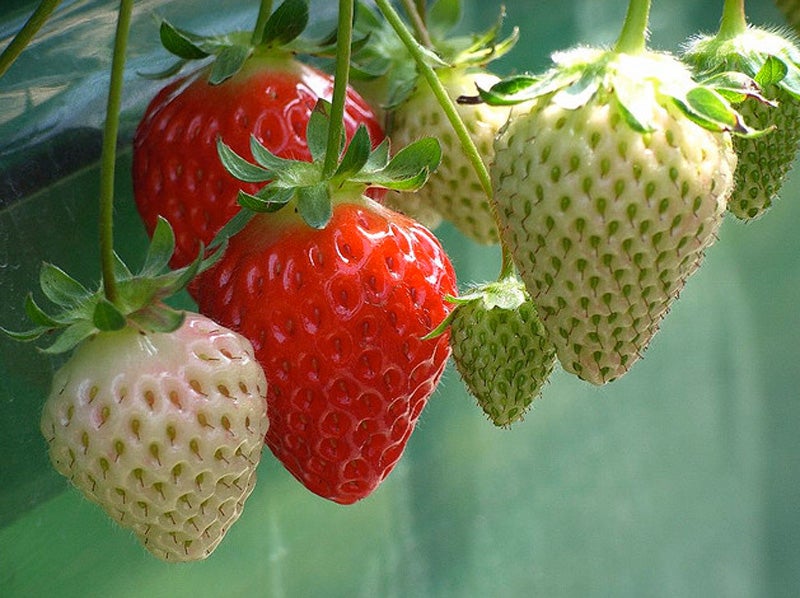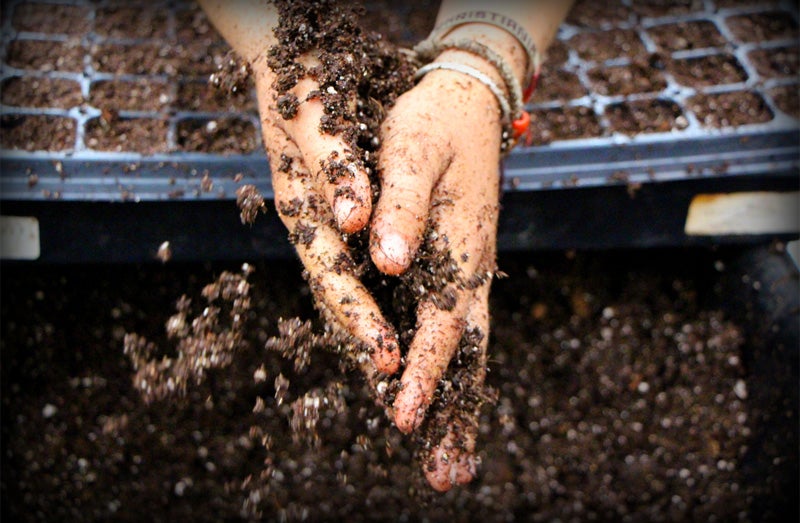Planting in memory of a loved one and caring for orchids
ListenMike McGrath explains how to avoid verticillium wilt, the basics of starting a successful strawberry patch, ridding wood-chip mulch of fungus, how to create an outdoor ladybug trap, preparing your soil with vermiculite and compost and planting cypress trees in memory of lost loved ones. Plus, Mike discusses the care of orchids with Gail Sklar, a speaker at this years International Orchid Show at the Academy of Natural Sciences.
Question of the Week:
“A European Cypress Tree was given to us when our son passed away three years ago; it is so special. We mulched it with our own leaf compost at the time of planting and again the following year and it did fine; but this winter a large stem turned brown. We don’t use any chemicals in the garden or lawn, just compost. We do have ornamental grasses planted close to the tree, which need to be cut back. Will cutting the brown portion off—about a quarter of the tree—save it? And can anything else be done to prevent its decline? The tag said it could be planted outside in Zones 5 through 11. Was this wrong? Please help!”
— Carolyn in Collingswood, NJ
Planting in memory of a loved one »
Highlights from show for April 5, 2014:
Avoiding verticillium wilt in a new raised bed garden
Liz’s tomatoes, herbs, and even her raspberries are suffering from verticillium wilt in her flat-earth garden in Sutter Creek, California. She’s ready to make the switch to raised beds and she calls Mike to ask for advice. Mike explains that the best raised beds dimensions are four feet by eight feet so gardeners can reach into the center without stepping on the soil. Liz should line the beds with cardboard to keep out the wilt that’s effected the soil and fill them with a foot of equal parts compost and high-quality top soil. He also advises Liz to rotate her tomatoes: “The best estimate is you can grow a tomato in the same spot for two years and then that same spot should not get tomatoes for three years.” Mike is surprised that her raspberries have been effected at all! He thinks Liz may have treated this hardy plant with too much compost. He suggests that she plant her new raspberries in a separate location with rocky soil and only tend them with water.
“The best estimate is you can grow a tomato in the same spot for two years and then that same spot should not get tomatoes for three years.”
Mike McGrath
-

Verticillium wilt in tomato leaves
Starting a strawberry patch
Mickey from Northeast Philadelphia wants to start a strawberry patch. Mike reminds Mickey that “strawberries are both easy and difficult.” Gardeners usually start their patch by purchasing strawberry plants from a farmer or local garden center in the spring. Mike thinks Mickey can fit about twenty-five plants in his three by three concrete block raised bed and he can also experiment with using tall containers and planters filled with a mix of compost and light, loose potting soil. Mike explains: “Now strawberries are kind of unique in that they’ll send out above ground runners. The main plants will delivers some fruits for you, but then they will send out these shoots that will also root and those are your daughter plants. So as the seasons progress you’re supposed to be taking out the old dead plants and giving room to the new daughter plants. So the more room you can spare them or the more areas you can spread them out over the more strawberries you’re going to get.” If Mickey finds any slugs invading his strawberry patch, he can protect his plants by lining the top of his bed and containers with copper foil.
Nuisance fungus and wood-chip mulch
John from Hockessin, Delaware is concerned about a round, brown, tennis-ball sized fungus emerging in his landscaped front garden. Mike bets that these nuisance fungi are growing out of wood chip mulch. Fungi spores and molds seek out rotting wood and mass-marketed mulches encourage fungi to join our landscapes. Mike says: “Wood mulches will always breed nuisance molds. Some of them are very damaging to homes and cars … Yours, these ball sized ones, are very unusual. I don’t recommend that you kick them or disturb them because as you’ve noticed they probably explode into millions of spores.” Unfortunately, living in a planned senior community John cannot personally control his landscaping, but Mike suggests that he inform the management of this potential health risk and suggest that they use an anti-fungal wood mulch treated with nitrogen. In the meantime, Mike thinks John can prevent any more of these bizarre fungus from growing by dusting the wood mulch with nitrogen-rich coffee grounds.
Special guest: Gail Sklar
Mike spoke with Gail Sklar, a speaker at this years International Orchid Show at The Academy of Natural Sciences in Philadelphia. Gail has grown orchids for years simply in window sills, but it makes her sad to see orchids flourishing and then withering away. So she has a few tricks for getting your orchids to keep blooming. She also gives some tips about watering and care. For instance: you don’t want to water above the leaves — that will lead to dreaded crown rot. Always water at the base of the plant.
Creating an outdoor labybug trap
Gina from Lebanon, Tennessee has a ladybug problem and she calls Mike looking for a pesticide free solution. Ladybugs have been running around her house all winter and she’d like to get rid of them. Mike explains that the standard chemical-free method for removing ladybugs involves vacuuming them into a canister vacuum with a bag and disposing of them. But there are also ways to save these ladybugs and help your garden along the way. To save a community of ladybugs that’s occupying your home you can fill a canister vacuum bag with newspaper and raffia, vacuum the ladybugs into the bag, spray the bag with a mister, and seal the bag and put it in your refrigerator. When it really warms up in the spring, release the ladybugs into your garden after a rainstorm at dusk and they will repay your efforts by keeping your plants pest-free. If Gina has this same problem next fall, Mike suggests that she preemptively capture these ladybugs before they invade her home. Mike explains: “You can take a pizza box … and cut holes in the bottom where it touches the house. Hang that on the side of the house where you see them landing. They will go into those holes. And at the end of the day or at the end of the week and you can shake them out of the pizza box and either into the trash if you don’t want them or into a storage container.”
Preparing your soil with vermiculite and compost
Red from Winnfield, Louisiana wants to know if it’s safe to add vermiculite to his vegetable garden to aerate the soil. While Mike prefers perlite, another of the naturally occurring mined minerals, he thinks it’s a great idea to boost heavy soil. Mike reminds Red to wear a mask when spreading this dusty compound in his garden. When Red asks about adding homemade compost to the mix and really improving the soil for his garden, Mike reminds him that “You know that’s the nice thing about gardening, Red, it’s like cooking! … I don’t think you can go overboard!”
— This week’s post was written by Marissa Nicosia, You Bet Your Garden intern
WHYY is your source for fact-based, in-depth journalism and information. As a nonprofit organization, we rely on financial support from readers like you. Please give today.




